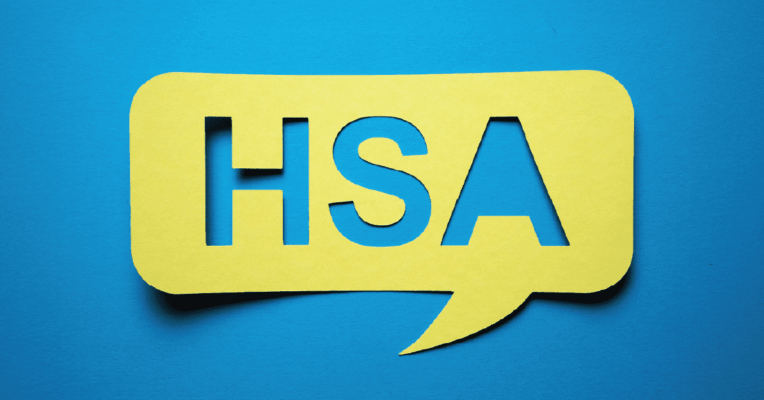401(k) Mistakes: No-Nos to avoid
A 401(k) plan can be an incredibly powerful tool for building retirement savings due to features like tax-deferred growth, employer matching, and easy payroll deductions. However, it’s easy to nix the benefits with a few easy-to-do 401(k) mistakes.
Even seasoned retirement savers can accidentally crack their future nest egg.
Stay far away from these all-too-common 401(k) missteps.
#1 Don’t dip into your 401(k) to pay off debt
Using 401(k) funds to eliminate debt like credit cards or personal loans is tempting. The plan feels sensible. However, trading retirement savings for wiping out high-interest debt today misses the long-term goal of these dollars. For example, a couple in their 40s had $50k of credit card debt. On top of this debt, they purchased a new home before selling it. To them, the clear solution to wipe this debt and have a cushion while paying off two homes was to liquidate one spouse’s 401(k).
Reasons why we communicated to them and reasons for other individuals to avoid 401(k) withdrawals for debt payoff are seen below:
- Penalties – Those under age 59 1⁄2 face a 10% penalty on top of income taxes due on withdrawals. This immediate hit counters debt relief. While they could clear the credit card debt in the above example, the distribution of their 401(k)s resulted in a 10% penalty and 20% income tax. The distribution cleared debit with an 18% APR but cost them 42% of the distribution amount with the 10% penalty and 32% federal tax withholding.
- Loss of tax-deferred growth – Removing funds eliminates their future compound growth. This lost opportunity cost makes the true impact of a withdrawal even more significant. While the couple benefits in the short-term by having increased cash flow and less debt, they have now impacted their ability to step into Vocational Freedom at their desired age and limited the amount they can spend by depleting these accounts.
- Recurrence – What stops further “loans” or “hardship withdrawals” down the road as more financial hurdles arise? It’s a convenient habit that’s hard to break. Shortly after liquidating the one spouse’s 401(k), the clients had additional cash needs for their new home. Their thought was to liquidate the remaining 401(k) as this seemed the easiest solution.
- Job loss – Some plans require complete repayment of loans after leaving your employer. You have no 401(k) in that situation, but the debt remains.
The only instance where this may make sense is to avoid bankruptcy or foreclosure. The withdrawal may be preferable if the only options are 401(k) withdrawal or total financial ruin. But pursue every other alternative first.
#2 Not participating or under-participating
Many employers automatically enroll employees in 401(k) plans to boost participation. But you can still miss out by not deferring enough from your paycheck. Be sure to capture any available matching funds at a minimum. One example is a client who utilized a $900k home equity line of credit (HELOC) to remodel their home. To account for the new monthly HELOC expense, they reduced their 401(k) contributions to zero to allow for more cash flow. This gives them the cash needed for the monthly HELOC payments in the short term. However, they are now decreasing their future cash flow by losing their contributions and employer matches of 3% and 4%, respectively — essentially free money.
Evaluate increasing your contributions by 1-2% annually. Small, incremental changes add up through ongoing compound growth but are usually painless on your lifestyle. Most companies increase salaries by a minimum of 1-2% to account for cost-of-living adjustments. Therefore, an easy way for clients to automatically contribute 1-2% more into their 401(k)s year-over-year is by electing to contribute a percentage of their salary each year instead of a fixed dollar amount. This means that the dollar amount contributed to your 401(k) will increase yearly without remembering to adjust this amount.
#3 Misguided investment strategies
How you invest your growing 401(k) balance also impacts your end results. Watch out for these misguided strategies:
- Overweighting employer stock. Employer matches in company stock are common. However, excessive concentration raises risks—cap at 10% of your account. We commonly see this mistake with prospective clients who plan to utilize Net Unrealized Appreciation with their concentrated stock upon leaving work. This strategy allows you to pay ordinary income on a cost-basis while allowing the stock to grow in a taxable account, taking the Capital Gains hit upon sale. This can be a smart strategy if you have excess employee stock in your 401(k), but the better move here is to keep your account diversified.
- Ignoring asset allocations. Deliberate allocations are better than blindly mimicking what coworkers do or chasing recent top performers. Every individual’s plan is different. What works for one person doesn’t necessarily work for the other. It is important to think through the timeframe of your plan and your total balance sheet.
- Investing too conservatively. Ultra-safe money market or stable value options may seem prudent but hinder growth over decades. Some risk is needed to build wealth long-term. When determining your allocation, it is pertinent to review your investment horizon – not just when you will be stepping away from work – as well as your outside assets.
- Getting too aggressive close to retirement. As you near retirement, dial down risk instead of reaching for maximum returns. Prioritize protecting capital over stretching for more growth.
- Excessive trading. Jumping in and out of investments rapidly tries to time the market but often hurts results due to fees and mistiming moves. Long-term growth is key with any investments. Selling equities when the market is at a low point and purchasing equities with the market is at a high point will reduce the returns you can benefit from and increase your trading expenses.
- Not rebalancing. Rebalance annually to maintain your target asset allocation, as some holdings grow faster than others. We recently met with a prospective client who had not looked at their 401(k) holdings since opening their plan. When we reviewed the account together, they were surprised to see how overweight they were to domestic securities and how underweight they were to intermediate-term bonds. Older individuals planning to step into Vocational Freedom within a year have a more conservative allocation they are more comfortable with. This mistake can be avoided by annually reviewing and rebalancing your account.
- Paying High fees. Understand all-in costs and shop available fund choices. Even fractions of a percentage make a huge difference annually. Investing in Target Date Funds is a common mistake that leads to higher fees. While these strategies seem like an easy investment option, they often yield lower returns when compared to a diversified portfolio, which has higher expense ratios than mutual funds.
#4 Early Withdrawals
Once money goes into your 401(k), avoid withdrawing it unless necessary. Here’s why you want to leave it untouched:
- Compounding growth – The longer money stays invested, the more it can multiply. Even small sums can snowball over decades into much larger balances. Time and compounding are your most powerful allies. In the previous example of the clients utilizing their 401(k) to wipe their debt, while they were able to increase their cash flow in the intermediate, they decreased the amount that their portfolio would be able to grow, thus decreasing their future available cash flow.
- Tax avoidance – Pre-tax contributions and growth avoid taxes until withdrawal after retirement. The longer you delay withdrawals, the more benefits this provides. Again, this can be seen in the above example of the couple utilizing their 401(k)s to wipe their high-interest credit card debt. Still, in return, they have to pay 42% of the distribution between the 10% penalty and tax withholding.
- Penalty avoidance – Those under 59 1⁄2 face a 10% penalty on top of ordinary income taxes. This immediate double-digit haircut puts a massive dent in savings.
#5 Starting too early
Ideally, start contributing to your 401(k) as soon as you have any earned income. The incredible power of compound growth over long time horizons makes getting started early critical.
However, there can be some scenarios where maximizing 401(k) contributions doesn’t make sense:
- If it causes you to rack up high-interest debt like credit cards to make ends meet. Diverting savings to pay off costly debt first may be smarter. The son of a client living in San Francisco learned this lesson quickly. He began his young adult years with San Francisco rental pricing and no emergency fund. The high rent costs, purchasing furnishing and supplies for said apartment, and several miscellaneous expenses quickly resulted in $4,000 of credit card debt. With interest rates on credit cards typically above 20%, this individual quickly spiraled towards more debt than anticipated.
- If you lack an emergency fund cushion. Some savings should be accessible pre-retirement for surprise expenses. Once you’ve built emergency reserves, redirect cash flow to boost 401(k) contributions. One way to think through the amount needed as a cushion is to calculate 3-6 months of your fixed expenses. Once this amount is known and protected, you can think through any upcoming expenses you may need to save, such as new apartment furnishings. Understanding your upcoming cash needs as a young adult is especially important to ensure you are setting yourself up for success. When starting, the percentage you set aside for retirement may be lower than preferred, but this is more ideal than compounding debt. As your emergency fund increases and your salary increases, you can increase the amount you set aside for retirement.
The key is balancing present needs with future savings to maximize the probability of retirement readiness–don’t neglect either. For example, if you plan to buy a car or home soon, it is important to consider when you would like to make this purchase, the amount you will need, and what that breakdown looks like for monthly savings. This allows you to continue saving for retirement while also being able to purchase near-term needs. Another rule of thumb for those starting careers is to think of utilizing 50% of your salary for fixed expenses, 20% for saving for retirement, emergency funds, and large expenses, and then utilizing 30% for fun. This approach can help determine what amount of rent you can afford and what you should / could be setting aside for your 401(k) contributions.
401(k) plans can turbocharge your retirement preparations if used wisely. But they can also set you back years if mismanaged. Learn more about how our Personal CFO approach helps all your eggs stay in your basket.






